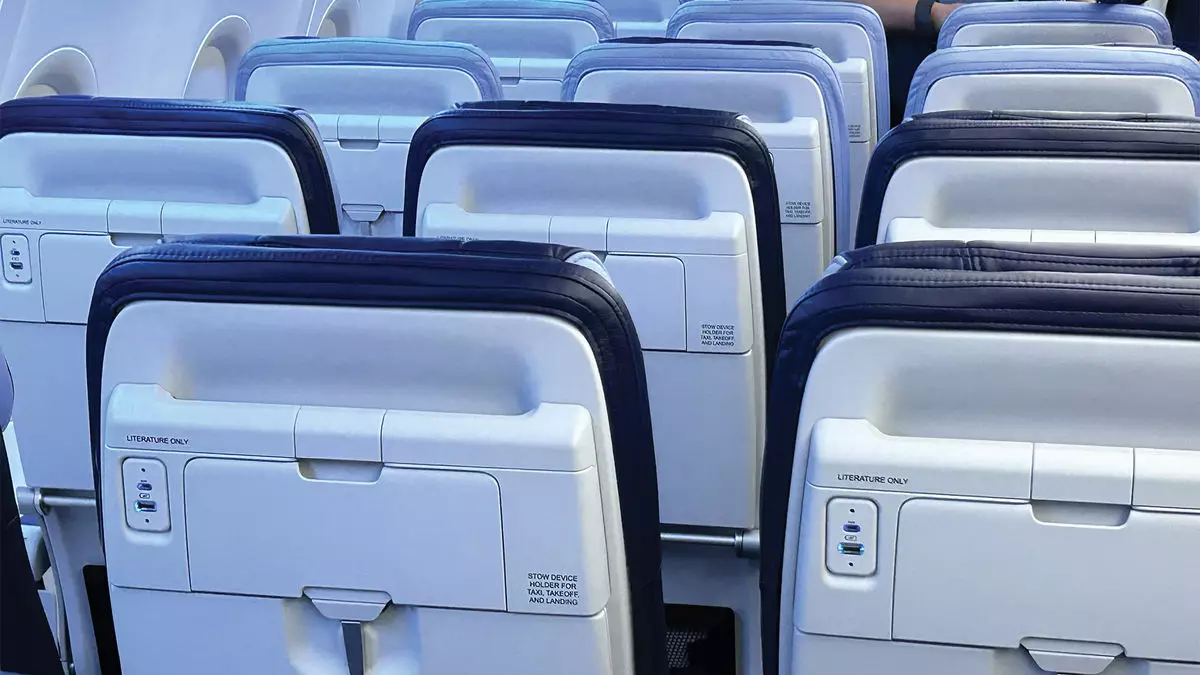In an environment where airlines continuously seek to enhance customer satisfaction, Southwest Airlines has found itself grappling with operational challenges and customer expectations. The airline has recently announced that it will not start reconfiguring its aircraft to include extra-legroom seats until mid-2025, significantly later than its initial timeline which aimed for a March launch. This decision highlights the intricate balance airlines must maintain between punctual implementation of upgrades and compliance with regulatory requirements.
The introduction of extra-legroom seats marks a pivotal evolution for Southwest, catering to a demographic increasingly focused on comfort during flights. This configuration will see approximately one-third of its fleet equipped with seats offering 34 inches of space between rows. It’s worth noting, however, that this upgrade will come with trade-offs, as standard seats on larger aircraft will see a reduction in space from 32 inches to 31 inches, aligning their dimensions with those of the smaller 737-7. Thus, while airlines strive to offer enhanced experiences, they also have to manage the complexities of competitive seating arrangements that could become contentious.
Amidst these developments, regulatory compliance looms large. Southwest is currently navigating two key approvals from the Federal Aviation Administration (FAA). The first, essential for any modifications to aircraft configuration, is the weight and balance certification, which the airline expects to secure in the first quarter of 2025. However, obtaining the Supplemental Type Certificate, necessary for a complete retrofit, is anticipated to be delayed until at least the second quarter. These bureaucratic processes illustrate the multifaceted challenges airlines face: despite strategic planning and market demands, external regulation can impede progress.
The timeframe for retrofitting up to 800 planes—projected at a rate of 50 to 100 aircraft monthly—places the airline in a challenging position. Such a scale of modification necessitates careful planning and resource allocation. If successful, this program could solidify Southwest’s competitive position, offering travelers more comfort while navigating the skies.
In addition to physical upgrades, Southwest is actively pursuing new business opportunities to strengthen its market footprint. The airline’s recent interline partnership with Icelandair, set to launch in February 2025, signifies its intent to broaden its operational horizons beyond traditional routes. By initially facilitating travel through Baltimore and later expanding to Nashville and Denver, Southwest is not just adding routes; it is strategically positioning itself within an evolving market of international travelers.
Moreover, the introduction of “Getaways by Southwest,” an evolving vacation package product that will replace the original Southwest Vacations brand, indicates a strategic pivot towards direct sales. By partnering with major hotel chains, such as MGM Resorts in Las Vegas, the airline is not merely expanding its service offerings; it is looking to consolidate its influence in a competitive holiday market. This is a savvy move amidst a general trend of personalization and customization in travel.
Despite the hurdles on the operational front, financial results from the fourth quarter have painted an optimistic picture for Southwest Airlines. Reporting a net income of $261 million illustrates a significant rebound from previous losses. The airline also noted an increase in operating revenue alongside a drop in operating costs, largely attributed to lower fuel prices. This situational improvement is essential for its long-term strategy, as Southwest aims for a larger market share amidst fluctuating economic conditions.
CEO Bob Jordan has expressed confidence that the airline’s performance is on par with the targets laid out during Investor Day in September, which indicated aspirations of achieving margins of 3% to 5% for 2025. Such ambitions, particularly in the tumultuous airline sector, rely on bolstering revenue streams while simultaneously curbing costs.
As Southwest Airlines moves forward, it is clear that the intersection of customer expectations, regulatory compliance, and market dynamics will dictate its operational strategies. The upcoming changes in aircraft configuration, alongside new partnerships and a positive financial trajectory, underscore a commitment to adapting in a rapidly evolving landscape. The journey ahead is fraught with challenges, but it also appears ripe with opportunity for Southwest Airlines to reinforce its position as a leader in budget-friendly, customer-centric travel.

